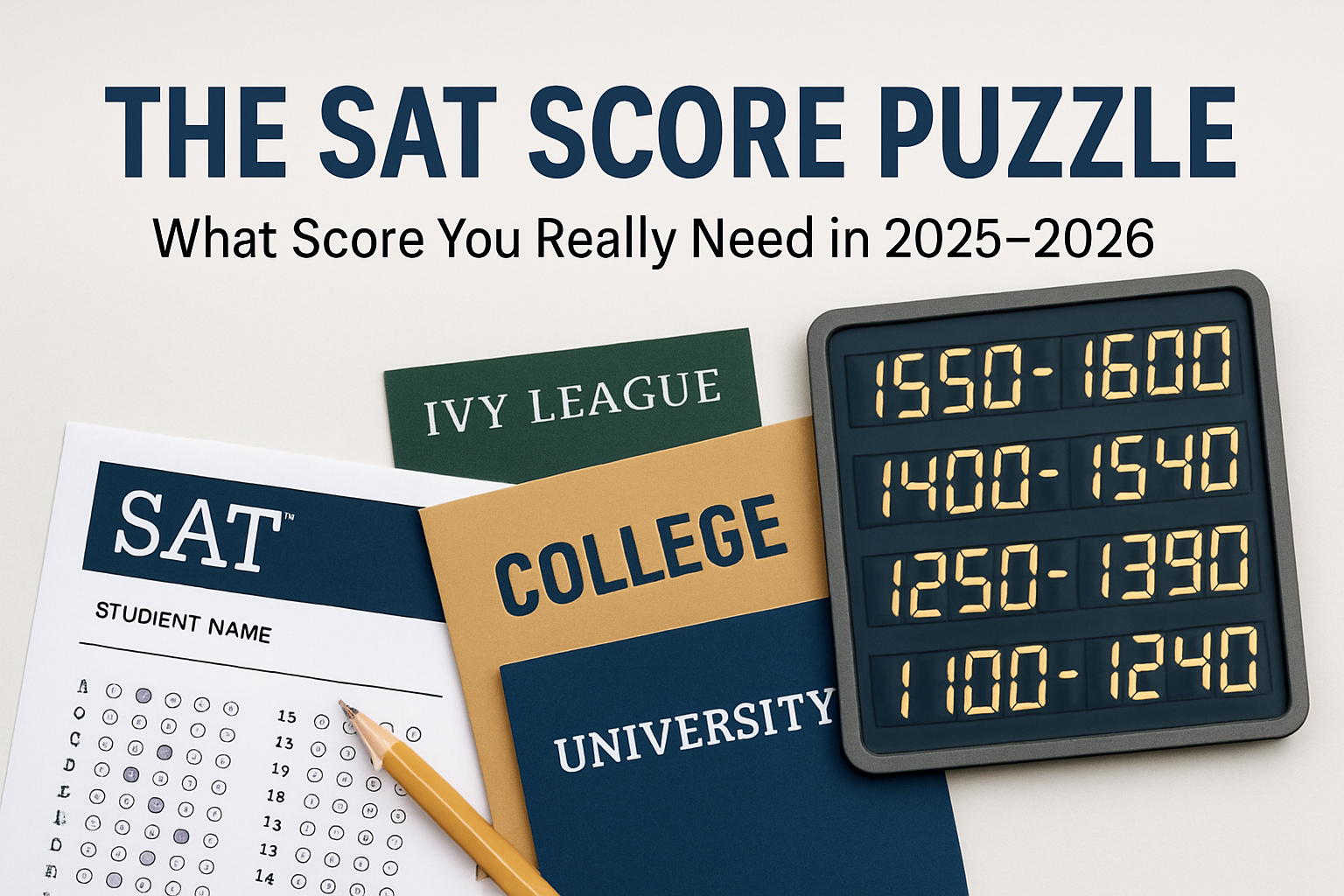Description:
Discover why the national SAT average of 1050 might not be enough for your goals. Learn how AI scoring tools and test-optional policies affect your college chances in 2025.
Introduction
"What's a good SAT score?""What's the current SAT average?" "How do I figure out my own score potential and what I should aim for?"
These are valid concerns for every college-bound student. The reality is, there's no universal "magic number" for the SAT. Students often look at the national SAT average score of 1050 as a starting point. This number only tells part of the story when colleges review your application. Your target score needs to match your specific college plans. Getting just above average might be perfect for some students, while others need much higher scores for top schools.A "good" score is deeply personal, depending on your unique college aspirations, the programs you're eyeing, and scholarship goals. A one-size-fits-all answer simply doesn't apply.
This Guide Will Show You:
- How to understand SAT average scores and percentiles in the current Digital SAT era.
- A smarter way to think about an "SAT score calculator" – using data and AI for deeper insights.
- How to define a "good SAT score" that aligns with your specific college and scholarship goals.
A Note on Score Data: All information regarding SAT scores is based on the latest Digital SAT information from the College Board, the official creators of the test. For the most current details, always refer to the College Board website. This page was last updated on May 27, 2025.
What Is a Good SAT Score? A Multi-Factorial Definition for Success
1. The Latest National SAT Average Score (Total and by Section)

The current national average SAT score is about 1050 on the 1600-point scale. Students typically score around 520 in Evidence-Based Reading and Writing (ERW) and 508 in Math sections, which add up to give us this total.
Many schools consider scores above 1050 to be good enough for admission, but top colleges often want much higher scores, usually between 1350 and 1600. Different schools have different requirements, so what counts as "good" depends on where you want to apply.
Factor 1: College Selectivity & Score Ranges
Colleges often report the "middle 50%" SAT score range for their admitted students (the scores falling between the 25th and 75th percentiles). Aiming for or exceeding the 75th percentile for a particular college can significantly enhance your application.
Typical SAT Score Ranges by College Selectivity (Digital SAT)

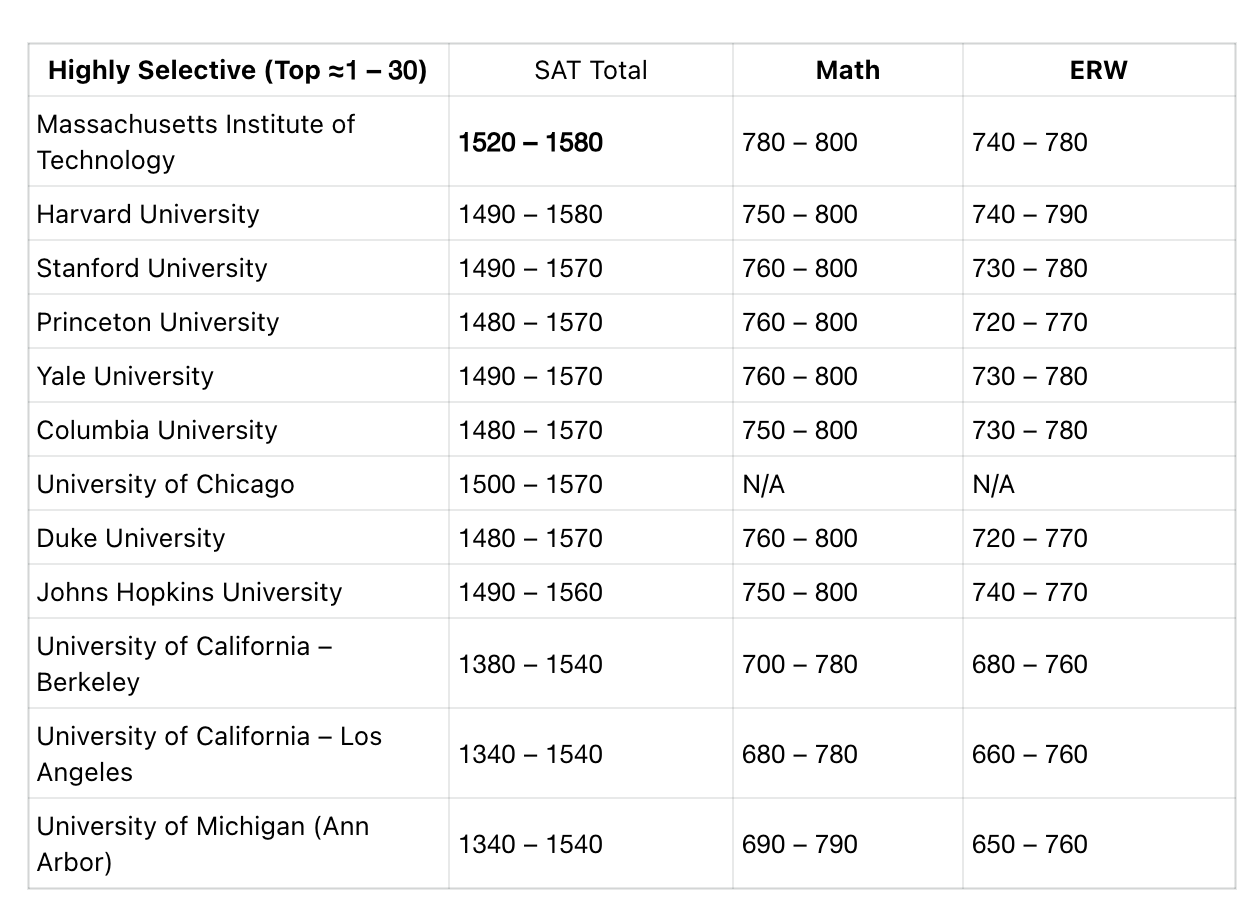
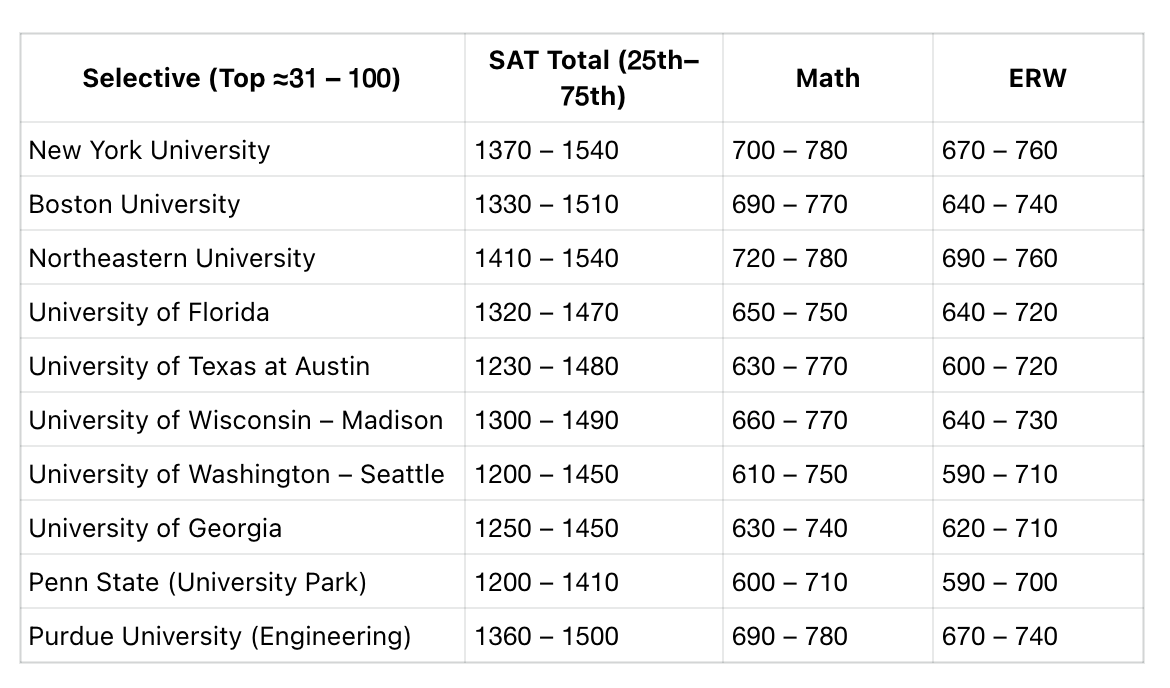
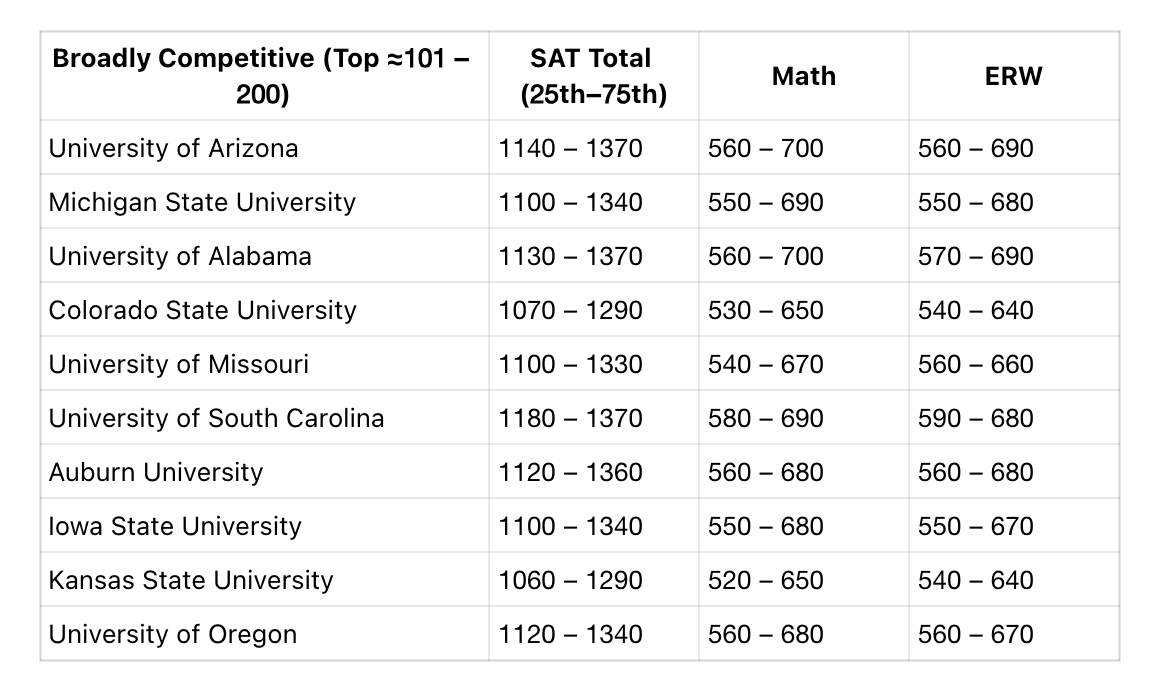
Factor 2: Specific Program Requirements within a University.
Competitive programs (e.g., engineering, computer science, pre-med tracks) within a university might have higher average SAT scores for admitted students than the university's overall average. Research these if applicable to your goals.
Notes: Most schools admit engineering/CS students through general admissions. If no major-specific range is published, we note “no separate data; aligns with university overall.” The SAT ranges above are middle 50% of admitted students (25th–75th percentile) for each program.
Factor 3: Scholarship Criteria.
Many merit-based scholarships use SAT scores as a key qualifying factor. Higher scores can unlock more financial aid opportunities.
2.The Current Landscape: SAT Test-Optional Policies (2025-2026)
The admissions testing landscape has shifted dramatically. It’s important to understand the terminology:
- Test-Optional: You decide whether to submit scores. Colleges will consider them if sent but won't penalize you if you don't. In these cases, colleges will focus on other factors (grades, essays, activities)
- Test-Blind: A test-blind school will not look at your SAT/ACT scores at all, even if submitted They do not consider scores under any circumstances. Only a few colleges remain fully blind.
- Test-Flexible: Test-flexible policies let you submit alternative exams in place of SAT/ACT. For example, Advanced Placement or IB test scores may be acceptable. NYU is a notable example of a long-standing test-flexible.
To learn more about specific policies, visit SAT Test-Optional Policies. Understanding these rules can help you make smart choices about your college applications.
For most students today, test-optional is the relevant norm. If a school is test-optional, when does a strong SAT score help? Well here's the answer.
- A good rule of thumb is: submit your score if it is within or above the college’s published middle 50% range.
- If your score is lower than the 25th percentile of admitted students, it’s usually better not to send it, and instead rely on your GPA and other strengths.
- If your scores are within or above a college’s mid-50% range…, then submit your scores”; otherwise, consider applying without scores.
3.The SAT Score Calculator – Manual vs. AI-Enhanced Insights
Students often look for an "SAT score calculator." While the Digital SAT's adaptive nature makes simple raw-to-scaled score conversions complex for manual calculation, here’s how to approach understanding your score potential:
Using official Bluebook™ Digital SAT practice tests: The College Board's Bluebook™ app is the best tool for this. It provides full-length adaptive practice tests and gives you scaled scores (200-800 per section, 400-1600 total) automatically after completion. This is your most reliable "calculator" for how your practice performance translates.
- Understanding raw performance conceptually: While you won't manually convert raw scores (number correct) for the adaptive Digital SAT, focus on analyzing the types of questions you miss in Bluebook™. This helps you understand why your score is what it is.
- In practice, your best “calculator” might be a blend of resources: take official or high-quality practice tests (via Bluebook or Khan Academy), review the detailed feedback, and use online score-forecasting tools as checklists.
And, smarter tools are emerging. Try our Aris!
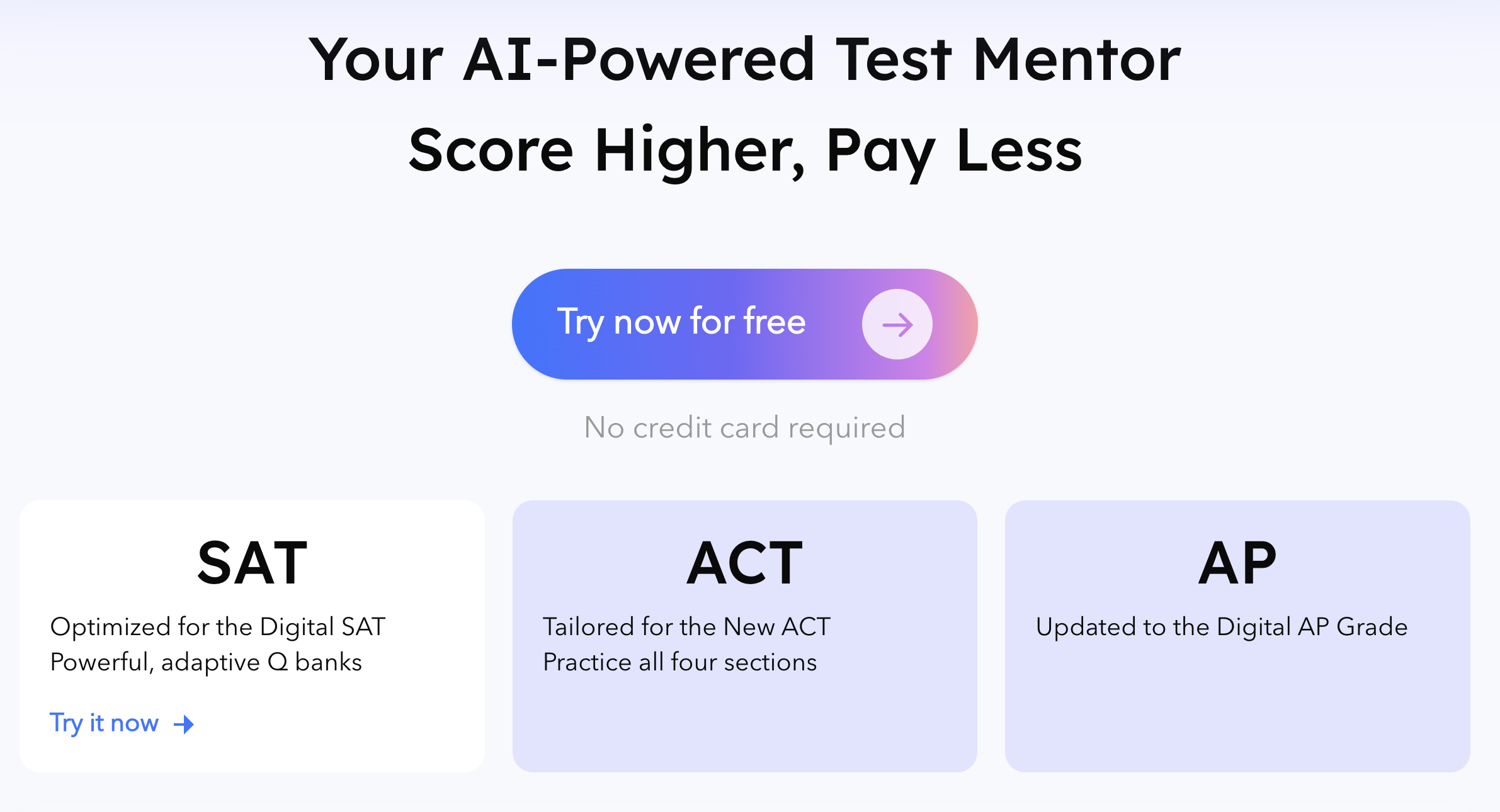
Precision Diagnostics: Our AI-powered diagnostic tests provide not just an estimated score but a detailed breakdown of your performance by specific skills, sub-skills, and question types. This pinpoints exactly where you're excelling and where you need to improve.
Precision Practice: Know and master exactly what the SAT is testing. See how the test breaks down into manageable, bite-sized practice sessions that help you master a skill in a handful of example questions. Whenever you run into problems, Aris is here to help you grasp the concept and beat every trick question.
Personalized Feedback & Potential Analysis: Aris helps you understand your score potential by showing how improving specific, targeted areas (identified by the AI) could impact your overall score. It’s a dynamic way to see the path to a higher score.
Concise, Memorable Notes and Summaries: See the test in a glance. Unlike traditional test prep materials that lump all questions into one long practice, we break down all questions along with effective, helpful notes for you to know how to master the questions. All our test notes are written by full-score experts and organized into a clear map that outlines all you need to know to succeed in every section of knowledge and skills tested.
4.FAQ
1.What is considered a good SAT score in 2025?
A good SAT score varies by college, but generally, scoring above 1050 (the national average) is considered decent, while top schools often require 1350+.
2.Do all colleges require SAT scores in 2025?
No, over half of the U.S. Colleges are now test-optional, though submitting strong scores can still strengthen your application.
3.How many hours should I study to improve my SAT score?
Plan for 20-40 hours of focused study time to potentially increase your score by 100-200 points.
4.How do I know what SAT score I need for college?
Check your colleges’ official websites for their “middle 50%” SAT range (the scores between the 25th and 75th percentile of admitted students). Aim for the top of that range if you can. For Ivies, shoot for 1470+; selective schools, 1250–1500; less selective, 1050–1250. Some majors, like engineering, might need higher scores.
5.What do SAT percentiles mean?
Your percentile tells you how you compare to other test-takers. If you're in the 75th percentile, you scored better than 75% of students. Colleges use these percentiles to show where most admitted students fall. Above the 75th percentile = strong applicant. Below 25th = you might need standout grades or activities.
6.Should I submit my SAT score to a test-optional college?
If your SAT is in or above the school’s “middle 50%” range, send it—it can help. Below that range? You probably shouldn’t. For test-optional schools, strong SAT scores are a plus, but weak ones can hurt you.
7.How to set a realistic SAT goal?
Start with a practice SAT for your baseline. Research your top colleges’ score ranges. Set three goals:
- Minimum (safe schools)
- Target (your main schools)
- Dream (reach schools’ top scores) Improving by 30–50 points per month is doable with steady practice.
8. Can SAT scores help me get scholarships?
Yes! Many colleges give automatic scholarships if your score hits a certain level. Some programs (like National Merit) also use the SAT. Lower-ranked schools sometimes offer bigger scholarships to students with high SATs. Check each college’s financial aid and scholarship info for details.
